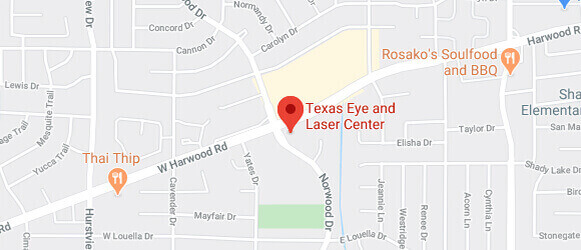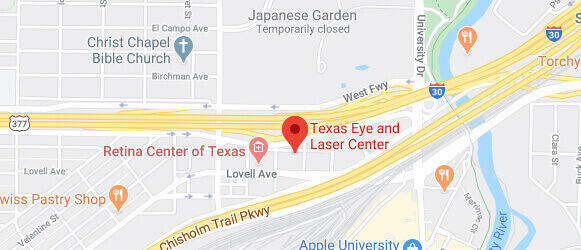Glaucoma Treatment in Fort Worth & Hurst, TX
The Silent Thief of Sight
If your doctor has told you that you have high intraocular pressure, or if you might have the beginning stages of glaucoma, then you will want to read the information below. Many people think that glaucoma is an eye disease that affects only seniors. This is not true. Glaucoma can strike even those in their early thirties. Many of you may remember a famous Minnesota Twins baseball player named Kirby Puckett. In 1995 Kirby Puckett was the MVP of the World Series, and the next year he was blind in one eye.
At the age of 35, his baseball career was over. This was absolutely catastrophic for the Minnesota Twins, their fans, Kirby Puckett, and his friends and family. Let the story of this baseball legend be a lesson regarding regular eye exams. Regular eye exams can save your vision because glaucoma is the leading cause of preventable blindness in the United States.
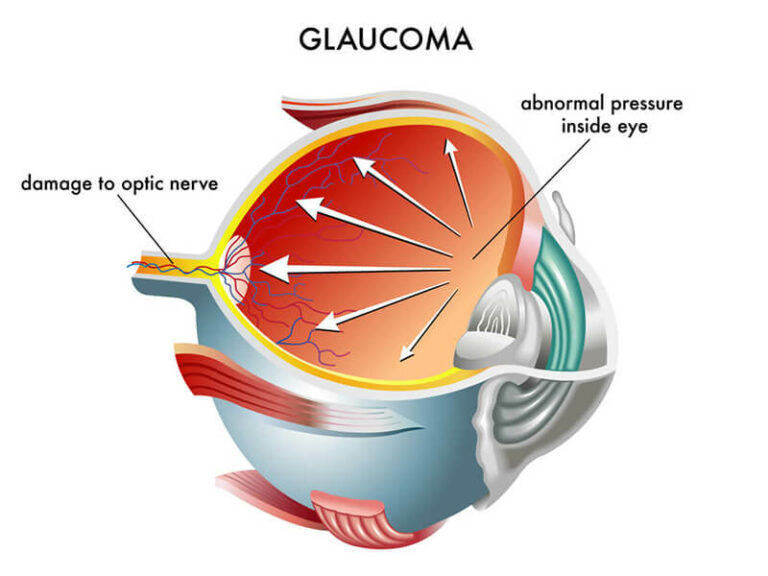
Many eye care patients are surprised when they learn that, according to the American Academy of Ophthalmology, almost 2.5 million Americans have glaucoma. More than half of these people do not even realize they have the disease, because glaucoma is asymptomatic in the early stages. As previously mentioned, glaucoma is known as the “silent thief of sight”, because it silently steals your vision. Glaucoma often goes undiagnosed because there is no pain associated with this high intraocular pressure.
Patients are urged to have routine eye exams to check the status of their general eye health. In a general eye exam, glaucoma tests can be performed, and the health of the retina can also be checked. Glaucoma is the second leading cause of blindness in the U.S., but it is the leading cause of preventable blindness. According to the American Academy of Ophthalmology, approximately 2.2 million Americans age 40 and older have glaucoma.
What is Glaucoma?
Glaucoma is an eye disease where the intraocular pressure in the eye increases and can eventually cause damage to the optic nerve, ultimately leading to vision loss if untreated. As previously mentioned, vision loss will occur with absolutely no warning signs or symptoms. The optic nerve is like a fine wire that connects the retina and the images we see to the brain. Damage to the optic nerve can occur when the pressure within the eye increases, usually due to a build-up of aqueous fluid inside the eye. This leads to the development of blind spots in our field of vision. As you probably realize glaucoma is a very serious disease that requires medical eye care attention.
The good news for Ft. Worth area glaucoma patients is that the doctors at the Texas Eye and Laser Center can help diagnose and treat this disease.
Diagnosing & Treating Glaucoma
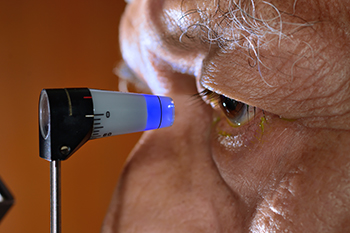 Patients who have glaucoma or glaucoma-like symptoms will benefit from the HRT II test, an instrument that uses a scanning laser to create an image of the optic nerve. It helps your eye doctor monitor the optic nerve for changes, thereby aiding diagnosis and assisting follow-up of the disease.
Patients who have glaucoma or glaucoma-like symptoms will benefit from the HRT II test, an instrument that uses a scanning laser to create an image of the optic nerve. It helps your eye doctor monitor the optic nerve for changes, thereby aiding diagnosis and assisting follow-up of the disease.
Before consulting you about glaucoma, the doctors at Texas Eye and Laser Center will require you to come in for an eye exam. The doctors will design a treatment plan based on your specific situation. Typically a medical approach using eye drops is the first line of treatment. For these eye drops to work, you must take them regularly and continuously.
Many patients have difficulty taking eye drops on a regular basis. Glaucoma eye drop medications can have side effects. You should notify your eye doctor immediately if you think you experience side effects.
Side Effects May Include:
- Red eyes
- Change(s) in your heartbeat
- Stinging eyes
- Blurry vision
- Frequent headaches
SLT
What is SLT?
SLT stands for “Selective Laser Trabeculoplasty”. This is a laser procedure used to treat glaucoma by reducing the pressure in the eye. There are a few key reasons why SLT may be deemed beneficial for you:
- Safe: SLT is not associated with systemic side effects or the compliance and cost issues of medications.
- Selective: SLT utilizes selective photothermolysis to target only specific cells, leaving the surrounding tissue intact.
- Smart: SLT stimulates the body’s natural mechanisms to enhance the outflow of fluid in your eye.
- Sensible: SLT therapy is reimbursed by Medicare and many other insurance providers, which minimizes your out-of-pocket expenses.
SLT Does not rely on medicines, instead uses an advanced laser system to target only specific cells of the eye –those containing melanin, a natural pigment. This allows for only these cells to be affected, leaving the surrounding tissue intact. As a result, your body’s own healing response helps lower the pressure in your eye.
How is SLT performed?
SLT is an outpatient procedure. You will sit in a conventional exam chair, where the doctor will use a slit lamp to examine your eye. During the procedure, the doctor will put anesthetic drops in your eye to numb it, and then place a lens on your eye for better viewing. The laser is applied to the edge of your pupil. The entire procedure only takes a few minutes.
Will I feel anything with the laser treatment?
Generally, the laser treatment does not cause pain, However, studies show some patients experience a sensation during the treatment. You may see a green flash of light, and feel nothing from the laser, the lens used on your eye may cause some redness or irritation.
How often do I need to receive SLT treatments?
Successes with SLT vary. You will need to consult your doctor to inquire about follow-up treatments.
How does SLT Work?
SLT works by using laser light to stimulate the body’s own healing response to lower your eye pressure. Using a special wavelength and energy, the laser affects only pigmented (melanin-containing) cells of your eye. SLT improves the flow of fluid in the eye, which in turn lowers your eye pressure.
How long will I have to wait to experience the full treatment effect of the SLT laser?
People can respond as soon as an hour after treatment, or as much as a few months later. Continued monitoring and follow up will determine the response of the therapy.
IS SLT right for me?
Only your doctor knows what is best for your individual needs. SLT may be the right option for you, simply ask your doctor to find out more.
New Technology for the Treatment of Open-Angle Glaucoma During Cataract Surgery
iStent® at Texas Eye & Laser Center
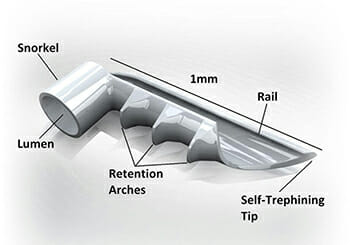 iStent Glaucoma Treatment ExampleTechnology has always played an important role at Texas Eye and Laser Center. Today, almost every aspect of vision is connected to a product or procedure that wasn’t available even 10 short years ago. If you have glaucoma and also require cataract surgery there is a new glaucoma eye care procedure that can help. By utilizing the iStent® our doctors can better help cataract patients with glaucoma. The iStent® enables patients to better control their glaucoma treatment and possibly reduce the need to use prescription eye drops at all.
iStent Glaucoma Treatment ExampleTechnology has always played an important role at Texas Eye and Laser Center. Today, almost every aspect of vision is connected to a product or procedure that wasn’t available even 10 short years ago. If you have glaucoma and also require cataract surgery there is a new glaucoma eye care procedure that can help. By utilizing the iStent® our doctors can better help cataract patients with glaucoma. The iStent® enables patients to better control their glaucoma treatment and possibly reduce the need to use prescription eye drops at all.
The iStent® is FDA-approved for use in conjunction with cataract surgery to reduce eye pressure in adult patients with mild-to-moderate open-angle glaucoma currently being treated with glaucoma medicine. In clinical trials, iStent® has been shown to safely reduce eye pressure, which is the primary cause of open-angle glaucoma.
How the iStent® Trabecular Micro-Bypass Works
High levels of intraocular pressure “IOP” (fluid within the eye) is the only controllable factor when treating glaucoma and is the number one risk factor for glaucoma. The main cause of elevated eye pressure in patients with primary open-angle glaucoma is a reduction of the aqueous outflow in an area called the trabecular meshwork. For patients with combined cataract and open-angle glaucoma, iStent reduces intraocular pressure (IOP) by improving aqueous humor outflow.
Inserted through a 1.5-mm corneal incision, iStent is the only FDA-approved device for the treatment of mild to moderate open-angle glaucoma. The iStent allows the aqueous fluid to bypass the trabecular meshwork and flow into Schlemm’s canal, which allows the aqueous fluid to leave the eye so that when new aqueous is produced within the eye there will not be such a pressure elevation. The iStent increases aqueous outflow through its normal pathway through Schlemm’s Canal. The iStent® is placed in your eye during cataract surgery by our surgeons at Texas Eye and Laser Center and is so small that you won’t be able to see or feel it in your eye.
Is the iStent® Effective?
A multicenter study in Germany, Switzerland, and Spain revealed an intraocular pressure reduction that ranged from 3.4 to 5.9 mm Hg when combined with cataract surgery. One year after the surgery patients were still able to eliminate 1 to 1.3 glaucoma medicines from their previous eye drop treatment plan.
The iStent Trabecular Micro-Bypass is a surgical therapy that:
- Does not limit treatment options that could help maintain your vision in the future
- Can be safely implanted during cataract surgery
- Saves very important eye tissue that is often damaged by other types of glaucoma surgery
Indication for Use
The iStent Trabecular Micro-Bypass Stent (Models GTS100R and GTS100L) is indicated for use in conjunction with cataract surgery for the reduction of intraocular pressure (IOP) in adult patients with mild to moderate open-angle glaucoma currently treated with ocular hypotensive medication.
Contraindications
The iStent is contraindicated in eyes with primary or secondary angle-closure glaucoma, including neovascular glaucoma, as well as in patients with retrobulbar tumor, thyroid eye disease, Sturge-Weber Syndrome, or any other type of condition that may cause elevated episcleral venous pressure.
Precautions
The patient should be monitored postoperatively for proper maintenance of intraocular pressure. The safety and effectiveness of the iStent have not been established as an alternative to the primary treatment of glaucoma with medications, in children, in eyes with significant prior trauma, chronic inflammation, or an abnormal anterior segment, in pseudophakic patients with glaucoma, in patients with pseudoexfoliative glaucoma, pigmentary, and uveitic glaucoma, in patients with unmedicated IOP less than 22 mmHg or greater than 36 mmHg after washout of medications, or in patients with prior glaucoma surgery of any type including argon laser trabeculoplasty, for implantation of more than a single stent, after complications during cataract surgery, and when implantation has been without concomitant cataract surgery with IOL implantation for visually significant cataract.
Adverse Events
The most common postoperative adverse events reported in the randomized pivotal trial included early post-operative corneal edema (8%), BCVA loss of = 1 line at or after the 3-month visit (7%), posterior capsular opacification (6%), stent obstruction (4%) early post-operative anterior chamber cells (3%), and early postoperative corneal abrasion (3%).
iDose TR
What is the iDose TR?
Texas Eye & Laser Center is proud to introduce the iDose TR, a new FDA-approved device that is making glaucoma and ocular hypertension treatment easier than ever by eliminating the challenges of prescription eye drops. Although they are usually effective at lowering intraocular pressure, they can be frustrating to use and require you to follow a strict application schedule.
With the iDose TR, patients won’t have to rely on prescription eye drops, as the device automatically releases the same type of medication inside the eye. This means you can save time and enjoy peace of mind knowing your glaucoma is being treated continuously without you having to remember your eye drops.
How Does the iDose TR Work?
The iDose TR device is a tiny implant 200 times smaller than a drop of glaucoma medication that can be inserted into the eye by your eye doctor at Texas Eye & Laser Center through a quick outpatient procedure. Once in place, it consistently releases a proprietary formula of the same medicine used in leading prescription eye drops.
This medication reduces elevated intraocular pressure, helping to reduce the symptoms of glaucoma and ocular hypertension. The iDose TR device is great for patients whose glaucoma isn’t responding to regular prescription eye drops or for patients who have a hard time sticking to a daily schedule of applying them.
What Can I Expect From My iDose TR Procedure?
To begin your iDose TR procedure, your eye doctor at Texas Eye & Laser Center will administer numbing medication to your eyes to ensure you are comfortable throughout the whole process. Then, your eye doctor will create a tiny incision in your eye and place the device using a sterile, single-dose inserter.
They will repeat the process in your other eye to complete the procedure, and then you can head home to recover. Recovery time tends to be very fast, with patients resuming normal activities after just one or two days.
The medication will start working immediately after insertion and begin treating your glaucoma or ocular hypertension. Your eye doctor will give instructions for any at-home care or follow-up appointments.
Does the iDose TR Have Any Side Effects?
Like any medication, the iDose TR can have side effects. However, most side effects are mild.
Patients may experience increased eye pressure, dry eye, inflammation of the iris, eye pain, eye redness, loss of part of the usual field of vision, or reduced clearness of vision.
Will I Still Need to Use Prescription Eye Drops with the iDose TR?
Although some patients may still need to use them, most patients with the iDose TR can enjoy complete freedom from prescription eye drops. In a clinical study, 8 out of 10 patients who received the iDose TR did not need prescription eye drops for 12 months after their procedure.
The iDose TR is convenient because it has the ability to regularly release medication where and when you need it and lower intraocular pressure. This means you can spend more time focusing on the things you love without worrying about your glaucoma.
OMNI Surgical System
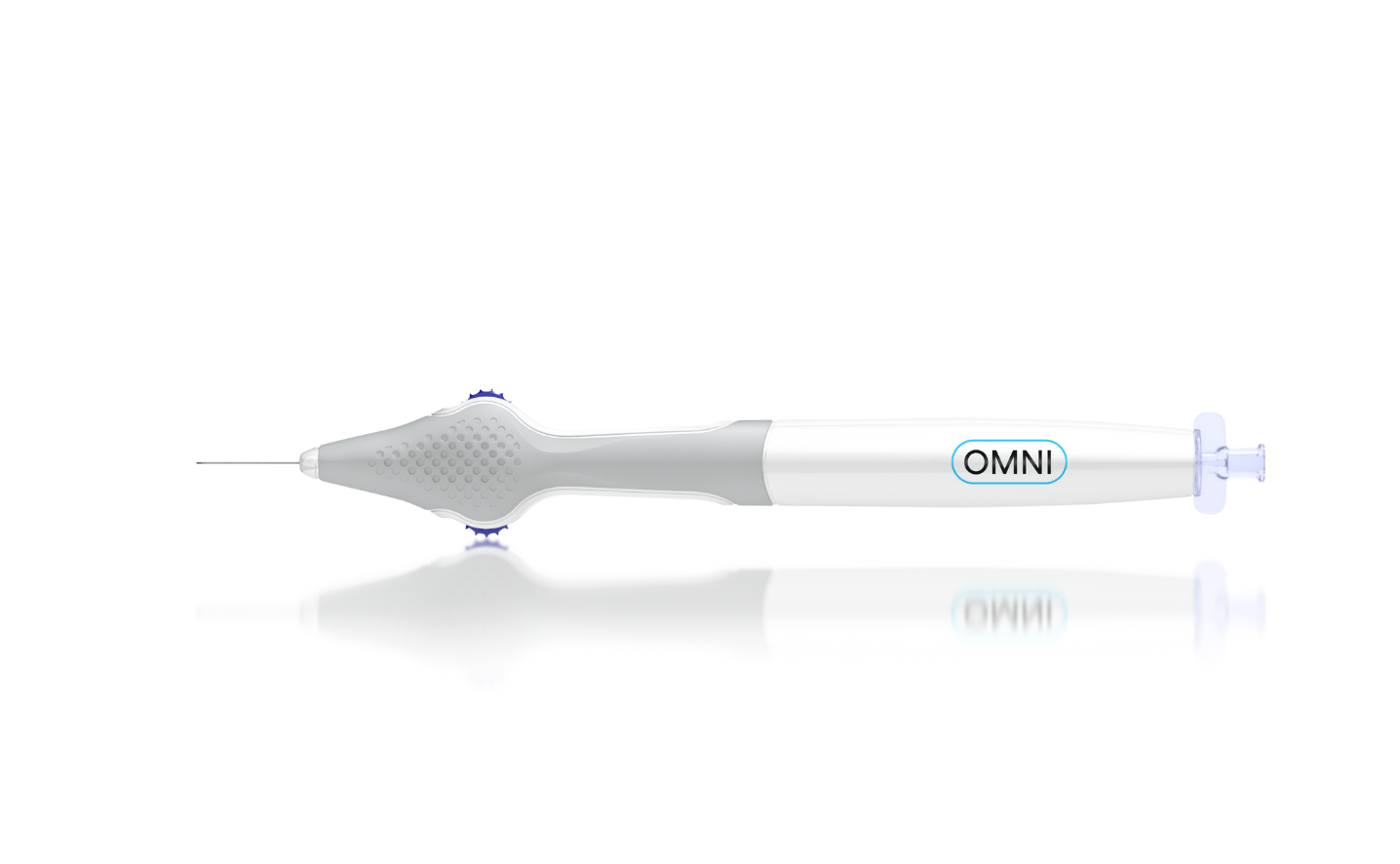
When you have a buildup of pressure in your eye with glaucoma, it’s similar to a clog in the kitchen sink. The OMNI Surgical System helps unclog the sink by removing blockages at multiple points and enlarging the drainage canal in your eye.
Then, it delivers viscoelastic fluid to clear the canal, leading to reduced intraocular pressure and helping prevent further vision damage from glaucoma. The OMNI Surgical System is used at Texas Eye & Laser Center for minimally invasive glaucoma surgeries or MIGS, which offer a safer, less invasive approach to treating glaucoma.
It can potentially reduce or eliminate your need for prescription eye drops for glaucoma, meaning you won’t have to be held down by a strict application schedule or worry about remembering your medication. Your procedure can be performed by your eye doctor simultaneously with cataract surgery with no additional recovery time.
Glaucoma Specialists in Fort Worth & Hurst, TX
Hurst & Ft. Worth Glaucoma Specialists Incorporate the New iStent for the Treatment of Open-Angle Glaucoma During Cataract Surgery.
Texas Eye & Laser Center continues to stay at the forefront of glaucoma technology by offering this new glaucoma procedure. Scott A. Cherne, M.D., Jerry G. Hu, M.D., Stacey Webb, O.D., M. Keith Head, O.D.,, D’Laine Heisterkamp, O.D., F.A.A.O. and Megan Solis, O.D., make up the core of the Texas Eye & Laser Centers glaucoma diagnosis and treatment protocol team. If you are a patient with glaucoma needing cataract surgery, now would be a great time to learn about what the iStent could do for you. We provide glaucoma second opinions to determine if your current treatment is as effective as possible. In addition to iStent, we offer a wide range of glaucoma treatment options.

